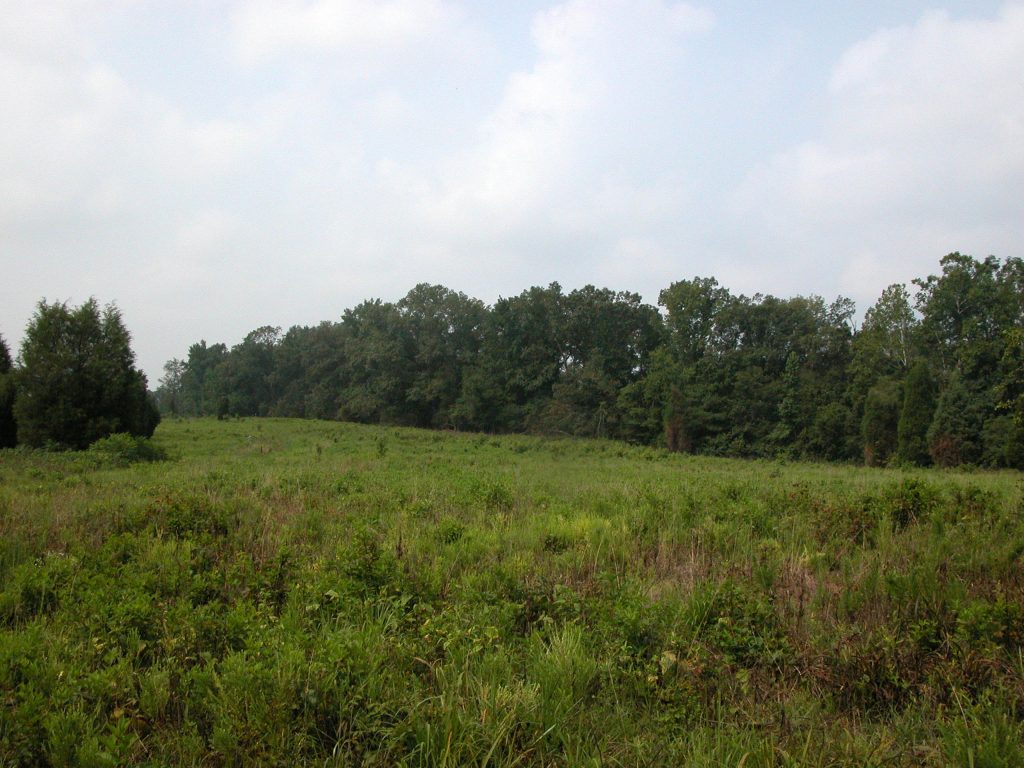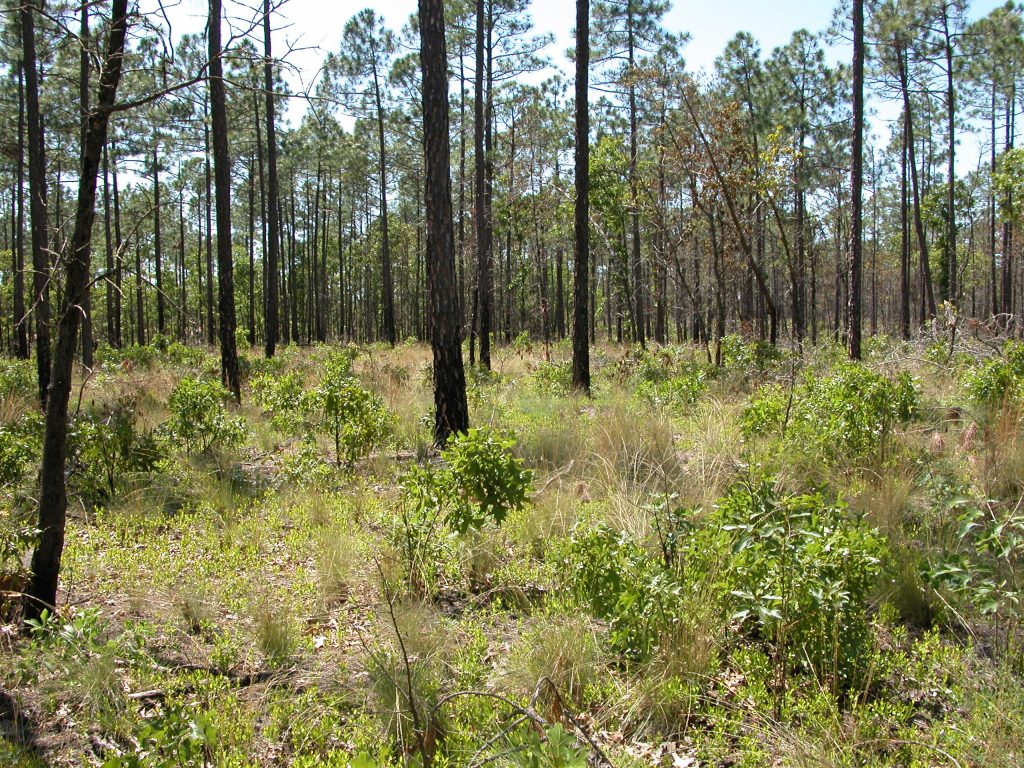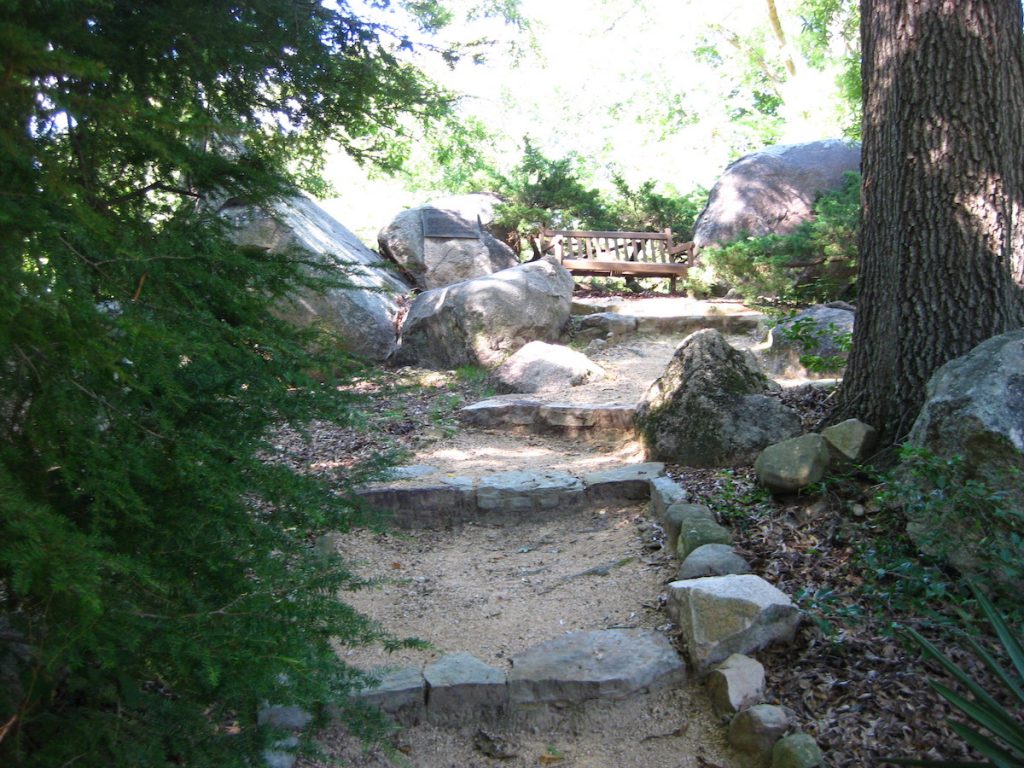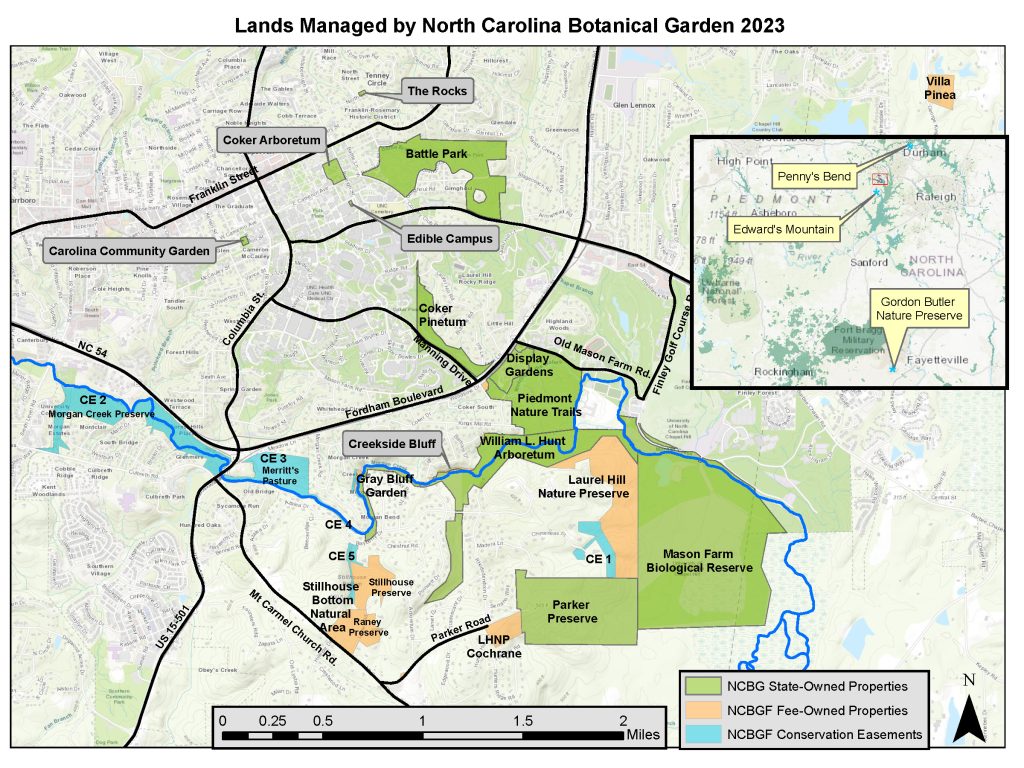At the North Carolina Botanical Garden, we work with our Foundation to protect over 1,200 acres of land in the Chapel Hill area through outright ownership, management agreements, and conservation easements. Many of these natural areas are open to the public.
What’s a conservation easement?
A conservation easement is a legal agreement between a landowner and the Garden (or Foundation) in which: (1) the landowner promises to keep the land in its natural conditions, and (2) the Garden is granted the right to monitor the property and enforce the terms of the easement if need be. Because land under easement remains privately held, access to these properties is restricted.
Visit our preserves safely
- Our preserves with public access are open from dawn to dusk.
- Pets are welcome in our public preserves, but please keep them on a leash and pick up after them.
- Leave nature as you found it: stay on designated paths, and don’t disturb plants, animals, fungi, or rocks.
- You’re in a natural setting and may see poison ivy, stinging insects, or snakes. If you keep clear of them, they’ll keep clear of you!
- No motorized vehicles, alcohol, or smoking permitted.
- Call 911 for emergencies.
Support our preserves
Help us preserve and maintain our preserves and natural areas by making a donation to the NCBG Conservation Fund.
Preserves with Public Access
Penny’s Bend Nature Preserve
Access: Public
Directions: Google Maps

Penny’s Bend Nature Preserve is an 84-acre site surrounded on three sides by the Eno River in eastern Durham County, North Carolina. The Preserve has the distinction of being U.S Army Corps of Engineers property that is sub-leased by the State of North Carolina Division of Water Resources and managed by the North Carolina Botanical Garden through the North Carolina Botanical Garden Foundation, Inc.
The Preserve protects rare plant species found in various plant communities: a remnant Piedmont prairie, rich mesic and alluvial forests, dry shortleaf pine-dominated bluffs, a human-sculpted open space, and an historic mill. Some of the rare plants species found on the Preserve include the federally listed Smooth Purple Coneflower (Echinacea laevigata); the regionally rare midwest prairie disjuncts, Eastern Prairie Blue Wild Indigo (Baptisia minor var. aberrans) and Hoary Puccoon (Lithospermum canescens); and a large population of Dutchman’s Breeches (Dicentra cucullaria), rare in the North Carolina Piedmont.
The mesic and alluvial forests on the west-facing slope of the Preserve have a high diversity of tree species and an abundant display of spring wildflowers. The uplands, once used to graze horses and cattle, is now an open field with scattered red cedars, providing a view of the slopes surrounding the bend of the river. The remains of the historic Cameron’s Mill, built in 1836, are located on the eastern border of the Preserve. The Preserve also provides an excellent site for individuals wishing to explore a natural and historic landscape.
Gordon Butler Nature Preserve
Access: Public

The Gordon Butler Nature Preserve is located in the Sandhills community of Hope Mills just south of Fayetteville, NC, in Cumberland County. This 12.5-acre preserve contains an impressive assemblage of pine flatwoods plants including an amazing collection of mountain laurel flower color variants and the rare white wicky (Kalmia cuneata). This preserve is also the site of a longleaf pine restoration project funded by the U.S. Fish and Wildlife Service Partners for Fish and Wildlife Program.
The preserve, is named for plantsman Gordon Butler of the Butler Nursery near Fayetteville. Butler was a friend of NCBG and a wildflower and native tree and shrub specialist. An active member of the NC Wild Flower Preservation Society (renamed the NC Native Plant Society in 2004), he was an early activist in propagating and encouraging the use of native plants in public and private landscapes. The preserve has been owned by the Foundation and managed by Garden staff since 1997. Often called a “nature wonderland,” it is open to the public but with no official parking.
The Rocks
Access: Public
Directions: Google Maps

The Rocks, on North Street in Chapel Hill, is a garden display and community amenity that was created through the efforts of Preston Fox, in cooperation with the University, as a remembrance of Louise Venable Coker, wife of renowned botanist William Chambers Coker, and daughter of University of North Carolina President Frances Preston Venable. Louise Venable Coker, an avid gardener, was influential in Chapel Hill’s garden club movement in Chapel Hill.
William Coker had built his home on this property in 1908. He named the property “The Rocks” for the rock outcropping on the lot’s south side. William married Louise Venable in 1935. He died in 1953, and after the death of Louise in 1983, a portion of the original property was developed for the public in the area now called The Rocks.
The connection between the Cokers and the North Carolina Botanical Garden runs deep. Through his estate, William C. Coker left the University the land that was to become the display gardens of the North Carolina Botanical Garden and the wooded area known as the Coker Pinetum along Manning Drive. Also, it was Louise’s father, President Venable, who had asked Dr. Coker, in 1903, to beautify a boggy pasture that was to become the Coker Arboretum—a beloved garden on the main University campus that is cared for today by the staff of the North Carolina Botanical Garden. Several University of North Carolina scholarships and awards are named for Louise and William Coker.
PRESERVES WITH RESTRICTED ACCESS
Edwards Mountain Preserve
Access: Restricted
Also known as Highland Pond or Salamander Pond, the 3-acre Edwards Mountain Nature Preserve is located in Chatham County. It was given to the Foundation by William Lanier Hunt and the Governors Club in 1996, and is located within the Governor’s Club gated community. Its significance is as the site of a breeding pool in which salamanders and other amphibians congregate to breed in the late winter and spring—habitat that has become rare in the increasingly developed NC piedmont. Garden staff visit the site at least once per year, but this is one of the few nature preserves where invasive species are not present, and no management is necessary.
Laurel Hill Nature Preserve
Access: Restricted
At one time, Laurel Hill Nature Preserve was part of the extensive real estate holdings of William Lanier Hunt. In 1997, Sally Jessee Brown, representing the Marin Development Corporation, donated 75 acres to the North Carolina Botanical Garden Foundation in addition to 12 acres of conservation easements. Sharing borders with the Mason Farm Biological Reserve, the Parker Preserve, and the William Lanier Hunt Arboretum, the Laurel Hill Nature Preserve is an important link connecting and preserving natural areas. The preserve includes mature upland mesic forest and several home sites of the Morgan family within its boundary lend historical and archaeological value to the property. Laurel Hill Nature Preserve was registered as a North Carolina Nature Preserve in 2001.
Stillhouse Bottom Preserve
Access: Restricted
The 22.6-acre Stillhouse Bottom Nature Preserve is owned by the North Carolina Botanical Garden Foundation, Inc. (NCBGF), and is a dedicated and permanently protected North Carolina Nature Preserve. NCBGF also holds conservation easements on 12 acres of contiguous private land to the south and west of the Stillhouse Bottom Nature Preserve.
The Stillhouse Bottom natural area is the only undisturbed, steep, north-facing ravine left in Orange County according to the Inventory of Natural Areas and Wildlife Habitats for Orange County, NC (2004). Preservation of this site is a conservation priority for the state of North Carolina, Orange County, and the North Carolina Botanical Garden. Over 100 plant species have been identified, and the high quality of the site is demonstrated by the presence of red-tailed and red-shouldered hawks, yellow-billed cuckoos, white-breasted nuthatches, ovenbirds, and scarlet tanagers, and other deep forest birds. Stream quality is likewise demonstrated by the healthy amphibian community, made up of dusky salamanders, two-lined salamanders, and green frogs.
The North Carolina Botanical Garden Foundation seeks to add all available undeveloped properties to the Stillhouse Bottom Nature Preserve through land donation and purchase, and through conservation easements. The undeveloped lots and the existing Stillhouse Bottom Nature Preserve, including potential conservation easements, could ultimately total 100 acres and represent how a group of dedicated individuals can conserve, in perpetuity, a relatively large area of biodiversity significance in a rapidly developing region.
The Stillhouse Bottom Nature Preserve is not open to the public except for occasional, guided tours.
William Lanier Hunt Arboretum
Access: Restricted
From the 1960s into the 1990s, William Lanier Hunt donated over 100 acres of land to the North Carolina Botanical Garden, including several beautiful rhododendron bluffs located in a gorge along Morgan Creek. The purpose the William Lanier Hunt Arboretum is to protect natural areas and conserve a collection of the diverse woody plants of the southeastern United States. Upstream of and contiguous with the Hunt Arboretum lies the eight-acre Grey Bluff Garden that also protects the steep slopes along Morgan Creek and another extensive rhododendron bluff.

